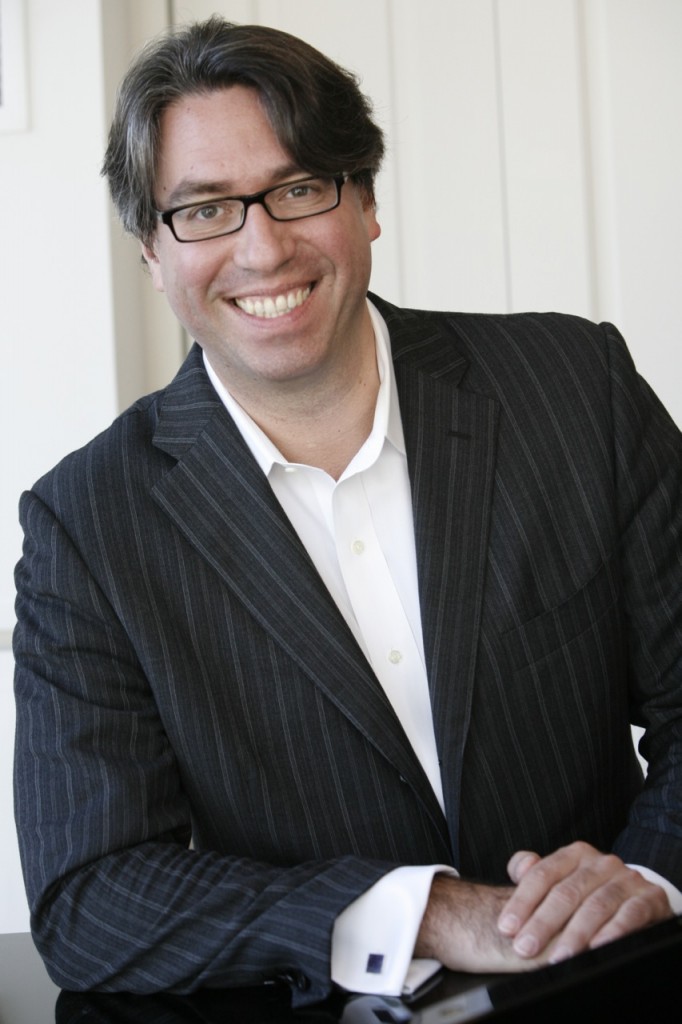Wachner, Trinity forces rock Carnegie with massive rarities by Ives and Ginastera

Julian Wachner led performances of Ives’ Symphony No. 4 and Ginastera’s “Turbae ad Passionem Gregorianam” Saturday night at Carnegie Hall.
Trinity Wall Street was calling the concert they produced at Carnegie Hall Saturday night “The Big Concert,” and big it was. It was also, in many ways, quite grand. And in a few ways it was also quite mad.
In the most obvious, logistical sense, the program was tremendously ambitious: Ives’ Symphony No. 4, with its chorus and multiple groups within the larger ensemble, followed by Turbae ad Passionem Gregorianam, by Alberto Ginastera, a symphonic Passion oratorio that calls for hundreds of singers.
All this was presented by Trinity’s Choir, Trinity Youth Chorus, the NOVUS NY orchestra, and the Washington Chorus and Boy and Girl Choristers of Washington National Cathedral Choir, led with command and passionate energy by Trinity’s music director, Julian Wachner.
Wachner also lead the audience in some hymn singing because, as he explained from the stage, the hymns were the common fabric from which Ives composed (along with marches and popular music) and were a part of the regular musical life of his audience. So the audience sang the hymns to get acquainted with Ives’ world, sounding great, but helped by some chorus ringers in the boxes on each side of the hall.
That was one of several features that Wachner established for the Ives symphony that were true to the music and exceptionally effective. The “distant choir” of strings and harp were placed in an upper balcony, stage right, the offstage percussion was truly offstage, and, in a completely unexpected touch, the solo piano—played with beautiful naturalism by Timo Andres—was at the foot of the stage, in concerto configuration.
The musical results could not have been truer to Ives’ values and aesthetic. His work is full of spatial configurations because that’s how he heard and experienced music, and in this symphony, hearing voices sing from above and each side, hearing different music, with different tempos and rhythms, drifting from what might have been the house next door, means experiencing the music communally.
And that means hearing Ives’ mystic chords of memory. Wachner said, “Ives was looking to the past to make a statement about America,” But more precisely Ives was seeking a way to return to a personal, idealized past, his memories full of admiration for his father and a sense of loss for a utopian era that never existed. Amid this, there is the sincere desire to connect all humanity through the Emerson’s Great Over-Soul.
Although they didn’t have the heft of the major orchestras, the large collective of musicians captured this, because they played the music with such skill and sympathy. The music, especially in the second “Comedy” movement, becomes so dense, that details are essential, and they were marvelously audible. One could hear a second violin sawing away in a rough solo in a back stand, the quarter-tone piano, and the lone soprano voice separating from the choir in the final movement. There is much chamber music inside this symphony, and it was remarkable how compellingly intimate Wachner made that sound. And the choral entrances, especially singing “Watchman” in the first movement, were like the touch of a loving hand on one’s back in the middle of a cold and lonely night.
The contrast between Ives’ communitarianism and Ginastera’s more traditional authoritarianism was amazing. “Turbae” is the Latin word for crowd, and in the Passion, the word refers to any group of people speaking. In Ginastera’s massive, rarely performed piece, the crowd is the main character; the chorus is the crowd and it seethes with rough, aggressive energy, threatening to explode off the stage.
Demanding 300+ singers makes for infrequent performances, but so does the maniacal quality of the music. It is fascinating but is also too long, and has the style of a sledgehammer. The score alternates narration between three soloists—two baritones and a tenor—who sing individual roles from Mark, Luke and John, and the chorus, which at times is the apostles, or witnesses, or itself a narrator.
At times the music is tremendous: the singers arrayed in polytonal stacks, everyone in the mass of voices responding “Surely not I, Lord?” in free rhythm, moments, especially around the word “Hosanna!”, when the singers do a half-scream that felt like it was peeling back one’s eyeballs.
But the piece is ritualistic and distant from the audience—where Ives chats, Ginastera lectures, and so much of the writing, like dissonant singing over rumbling and chattering percussion, sounds dated.
Still, the musicians played this like it was the greatest music ever written, and were impressive in every way. Thomas McCargar, as the Evangelist, has by far the largest solo part, and he was excellent, while tenor Geoffrey Silver (both Pilate and Judas), and baritone Scott Allen Jarrett as Jesus, were strong in what are oddly limited parts.
Like a lot of once-in-a-lifetime experiences, it is good to hear Turbae and good to know one will never hear it again. But Ives’ Symphony No. 4 should be heard always, and preferably in performances as well-prepared and outstanding as this.
Posted Mar 09, 2015 at 11:08 am by Alejandro
The reviewer says:
“It is good to hear Turbae and good to know one will never hear it again”.
What a dismissive and disparaging comment. Well, I certainly hope not to happen that! There are many Ginastera’s pieces that need desperately to be performed and recorded, and Turbae is one of them. Thank God, the conductor of this concert has announced plans to record the piece.